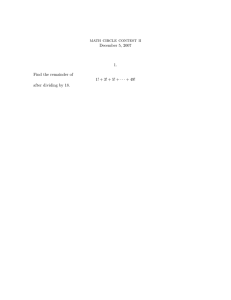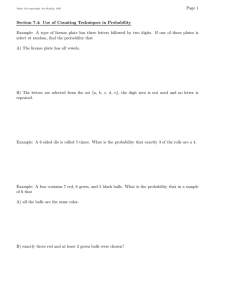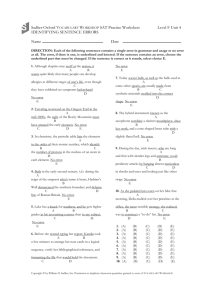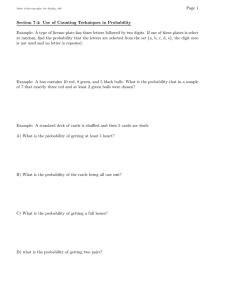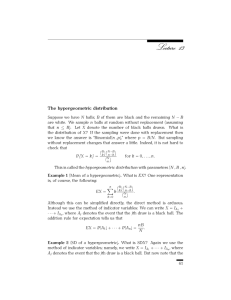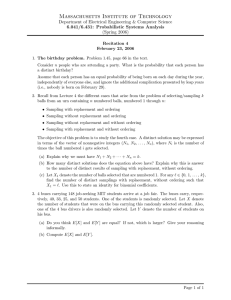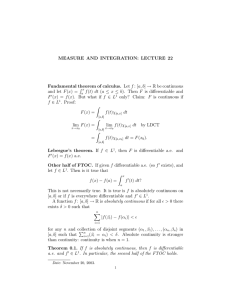Stat 330 Formula Sheet Exam I
advertisement
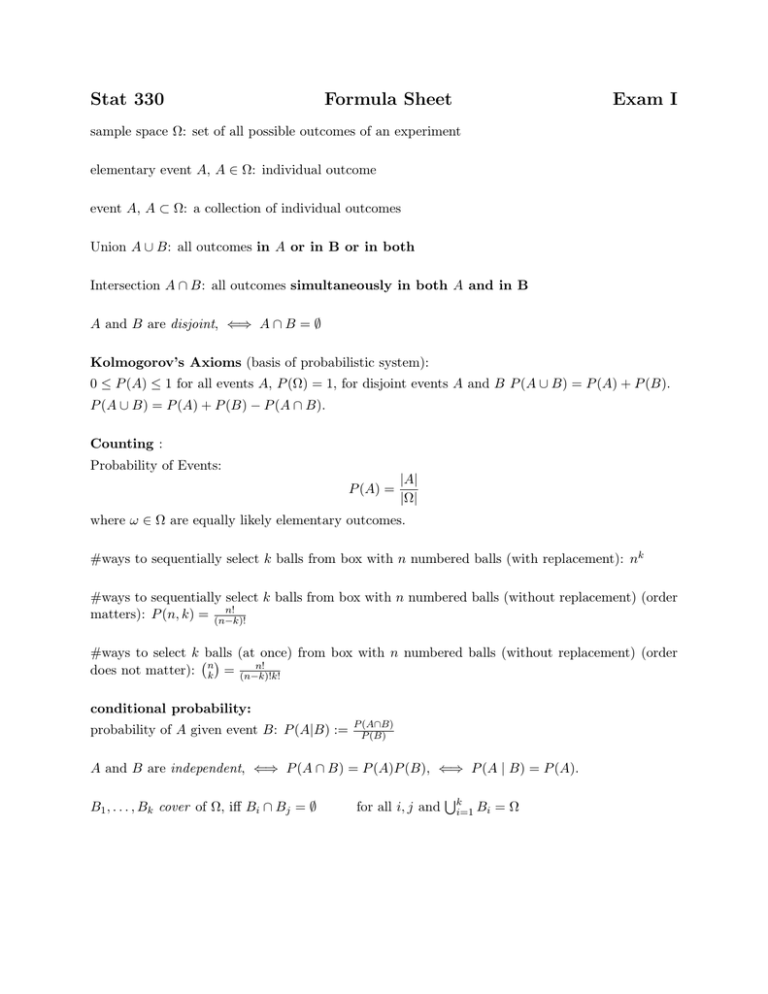
Stat 330 Formula Sheet Exam I sample space Ω: set of all possible outcomes of an experiment elementary event A, A ∈ Ω: individual outcome event A, A ⊂ Ω: a collection of individual outcomes Union A ∪ B: all outcomes in A or in B or in both Intersection A ∩ B: all outcomes simultaneously in both A and in B A and B are disjoint, ⇐⇒ A ∩ B = ∅ Kolmogorov’s Axioms (basis of probabilistic system): 0 ≤ P (A) ≤ 1 for all events A, P (Ω) = 1, for disjoint events A and B P (A ∪ B) = P (A) + P (B). P (A ∪ B) = P (A) + P (B) − P (A ∩ B). Counting : Probability of Events: P (A) = |A| |Ω| where ω ∈ Ω are equally likely elementary outcomes. #ways to sequentially select k balls from box with n numbered balls (with replacement): nk #ways to sequentially select k balls from box with n numbered balls (without replacement) (order n! matters): P (n, k) = (n−k)! #ways to select k balls (atn!once) from box with n numbered balls (without replacement) (order does not matter): nk = (n−k)!k! conditional probability: probability of A given event B: P (A|B) := P (A∩B) P (B) A and B are independent, ⇐⇒ P (A ∩ B) = P (A)P (B), ⇐⇒ P (A | B) = P (A). B1 , . . . , Bk cover of Ω, iff Bi ∩ Bj = ∅ for all i, j and Sk i=1 Bi =Ω Total Probability Law B1 , . . . , Bk is cover; P (A) = Pk i=1 P (Bi ) · P (A|Bi ) for any event A Bayes’ Rule B1 , B2 , . . . , Bk is cover; P (Bj |A) = P (A|Bj )·P (Bj ) Pk i=1 P (A|Bi )·P (Bi ) Discrete random variable X discrete set of possible outcomes, probability mass function (pmf) pX (k) = P (X = k) P probability mass function properties: 0 ≤ pX (k) ≤ 1 for all k and k pX (k) = 1. Cumulative distribution function (cdf) FX (t) = P (X ≤ t) = P x≤t p(x) Cumulative distribution function properties: FX (t) non decreasing for t, limt→−∞ FX (t) = 0, limt→∞ FX (t) = 1, step-wise increases at k. P expected value E[X] = i xi pX (xi ), P variance V ar[X] = i (xi − E[X])2 pX (xi ) = E[X 2 ] − (E[X])2 . expected value & variance properties: E[aX + bY ] = aE[X] + bE[Y ], E[X 2 ] = V ar[X] + (E[X])2 , V ar[aX + b] = a2 V ar[X] V ar[X + Y ] = V ar[X] + V ar[Y ], iff X, Y are independent. E[X · Y ] = E[X] · E[Y ] only if X, Y are independent.


